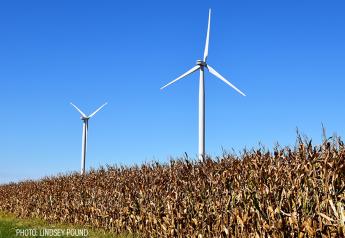Bayer Gives Glimpse At Future

President of Bayer’s Crop Science division Liam Condon and Bob Reiter, head of research and development, provided details on the company’s innovation pipeline in early January. Bayer has 75 projects in the crop science portfolio being advanced through the pipeline, and these span the three platforms of seeds and traits, crop protection, and digital.
It’s those three platforms that are providing a unique advantage to the company’s capabilities says Condon.
“We basically took the world’s leading seeds and traits platform, the world’s leader in biotechnology, with Monsanto, we took the most innovative crop protection portfolio, both with chemicals and biological solutions on the Bayer side, and augmented by additional biological solutions from Monsanto; and the world’s leading digital ag platform in the face of the Climate Corporation, through Monsanto, and put this all together into one company that is better able to develop tailored solutions for growers than any other company out there,” Condon says.
The company leaders say they want to generate more innovation faster than any other competitor as they leverage the three platforms into tailored solutions for farmers. As the No. 1 position holder in global values serving the corn, soybeans, horticulture, cereals and digital farming markets, Condon looks ahead and says “but this isn’t something where we are willing to rest on our laurels.”
“We are really, really excited about what we would call the imminent digital transformation of agriculture,” Condon says.
One example is the expansion of Climate Corporation’s Seed Advisor from three states to six states demonstrating the product in 2019.
“We are assembling this incredible capability across the entire portfolio we have, and then bringing this together in terms of the capabilities and decision-making we have with our digital platform I think really unlocks tremendous value,” Reiter says.
The company will also use leading technologies to accelerate their pace, and examples include the use of doubled-haploid technology, decision-making using genetic markers, and using data with machine learning.
Reiter previewed three biotechnologies coming to the U.S. market from Bayer: XtendFlex platform for soybeans with additional mode of action for weed control, third-generation below ground corn rootworm control, and Lygus and Thrips control for cotton.
He also mentioned the progress of short stature corn in the company’s pipeline, with field demonstrations coming in the next three to four years.
“I think short-stature corn, at its foundation, while it is simply a reduction in the overall stature of the crop, that fundamentally brings and unlocks some real solutions for the crop,” he says.
Those advantages include short stature corn being less susceptible to stalk lodging, stalk rots, green snap.
“This now creates an opportunity for growers to manage the crop differently because it allows access with equipment and can provide supplemental spray or fertility applications that could not be managed previously with the tall crop,” he continues. “I think it potentially sets the stage for a whole new platform in terms of the overall density that the corn crop can be grown at.”
Reiter also detailed two crop protection technologies in the pipeline.
“One of the things that I’ve certainly enjoyed learning about is how the whole small molecule discovery process has been changing and how we’ve been leveraging external innovation and new data types and new methods of identifying starting opportunities for our small molecule discovery effort,” he says. The developments have allowed the company to “fail fast, fail early” with product development, which he believes will lead to more innovation faster.
The second crop protection pipeline development has been the concentrated resources and efforts around biologicals.
“You can see where the team has made great strides in terms of being able to demonstrate how we can use candidate microbials for disease control. And then the other area that we’re exploring, and part of this is through the legacy partnership with Novozymes from Monsanto and the BioAg Alliance, which is also unlocking additional yield potential where microbials can be used and identified to provide enhancements in nutrient availability, which helps to grow the crop more effectively and, ultimately, translates into yield for our customers,” he says.







